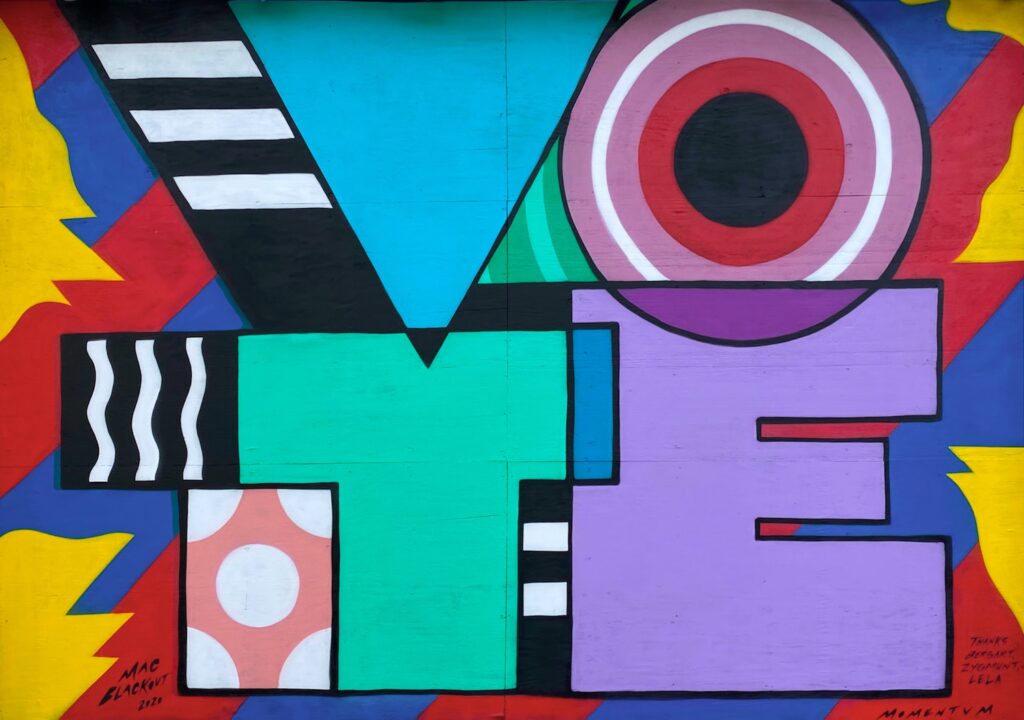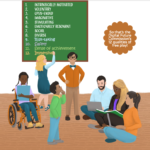I had a “Voting Plan.” My plan helped me to get the research done on all the local propositions, mark my ballot, identify my nearest drop box, and place my ballot in well ahead of November 3. And my plan helped me track that my ballot had been received and would be counted. I am hearing this from a lot of different places—Make a Voting Plan. Good advice. But then what?
I am working on my Election Plan now and I am encouraging family and friends, and you, to do the same. I think it is as important as a Voting Plan, but for different reasons. For our children and teenagers, it’s especially important to model proactively and creatively engaging with the wider election process. So what do I mean by an Election Plan? November 3rd is 10 days from today (I’m writing on Saturday morning, October 24—yes, I am lagging this week). We can be pretty certain that the media cycles in this run-up will get more frenetic and intense, and the fear factor will be amped up on digital dexamethasone. How do you plan to engage with the media? I suggest (remember, I am working on my own Election Plan here) scheduling in advance some time for conversations about what you’re reading and hearing. Early on in the conversations, talk about what sources you’d like to check for input and why.
Make sure to include your kids in designing your Election Plan. With older children and teens, you might each take a different media sources, take 20 minutes to read or listen, and come back and share what you’ve noticed. Make space to include your emotional responses. Consider using some large pieces of paper to map your responses to various articles or newscasts. Call out media that focuses on solutions and media that focuses on pumping up the fear and anxiety. Discuss the role of social media in the election. What do you know about Twitter’s recent policy changes on disinformation, or Facebook’s role in the spread of disinformation? What is confirmation bias?
Consider if your family, friends, or class could connect with another family, friends, or class for a pre-election Zoom call to share what you’d like to see happen in this country, or your town. Set a date to connect and broaden your conversation. You might share a resource (see several below) and discuss in the Zoom call. Make sure you include the social-emotional aspect. How are you all feeling? What helps you when you’re feeling worried or anxious?

Election Plan Conversation Resources
SciFri: Listen to this segment of Science Friday together (for your older kids/students) sometime this week to help you approach how to parse the election forecasts. Have a conversation. One thing great about podcasts is that you can pause throughout and discuss.
FiveThirtyEight: In the SciFri podcast, Ira and reporters discuss changes Nate Silver has made to the FiveThirtyEight website since the 2016 election. LIsten to the SciFri podcast, and then explore FiveThirtyEight. One reporter in the podcast says this will be her daily go-to site for election news.
Pew Research Center: I have shared (and participated in) Pew Research Center Reports in this blog before. Here is their live archive of reports for Election 2020. Make this a source of information. And don’t forget to model checking out the About page so you don’t just take my word for it. Who is Pew? Watch the video on this page.
A Kids Book About Voting: I have not read this book, but I have been noticing this series, A Kids Book About…, and it looks like they’re doing some good work (e.g., other topics include COVID-19, death, systemic racism, white privilege, depression, bullying, body image, failure, optimism, divorce, and more). Ages 7+
@LizaDonnelly: if you have artists in the house, or if you don’t have artists in the house (but wait, aren’t we all artists of some sort or another?), watch Liz Donnelly live draw. I am a closet comic artist and I learn something every time I watch her, AND I have a good laugh. You can see some of her past live drawings here. I loved the one this week in Central Park.



